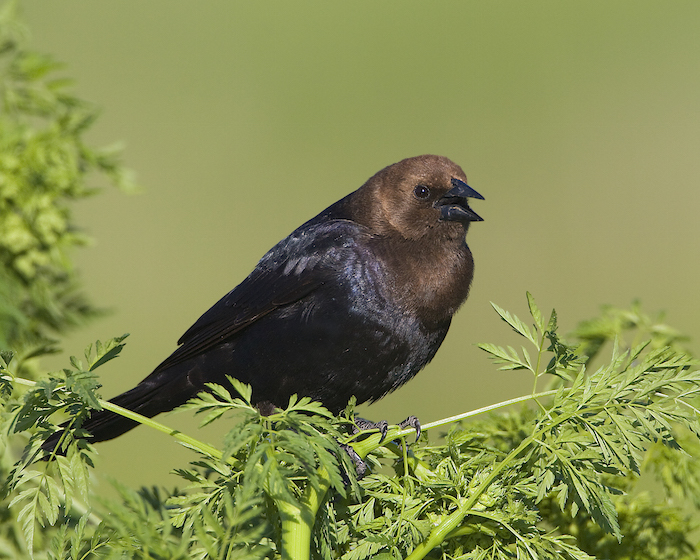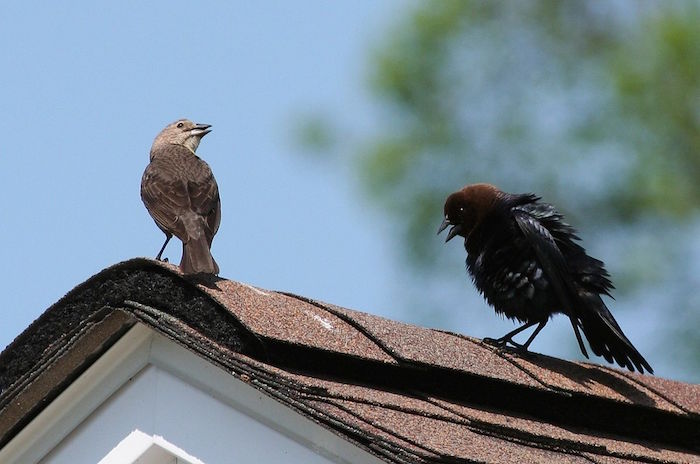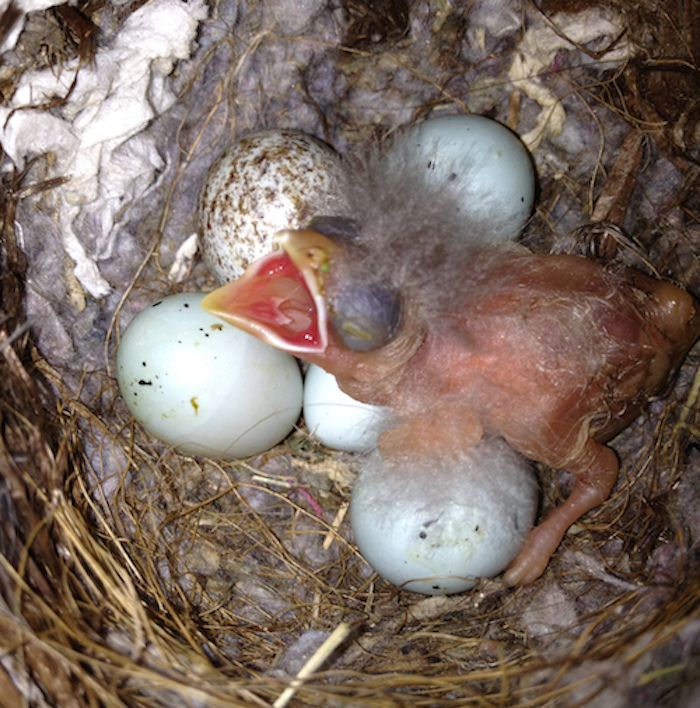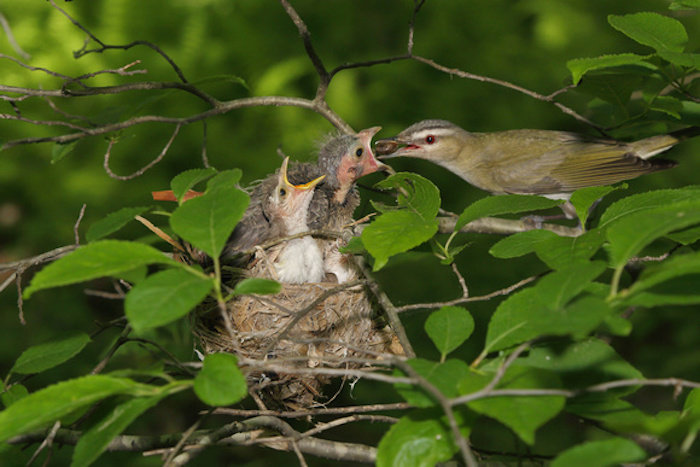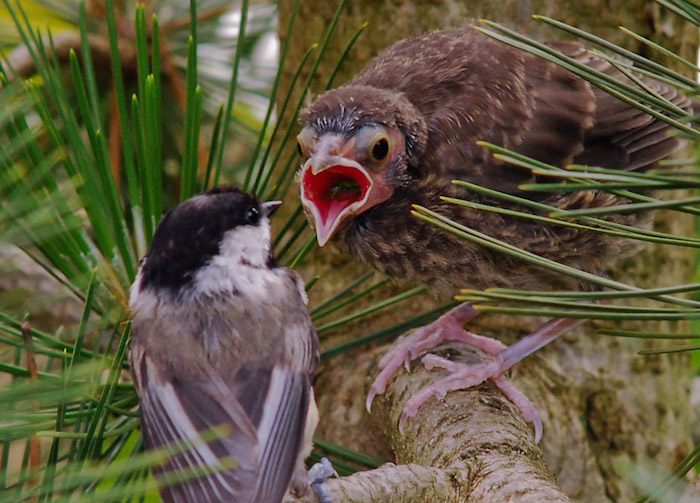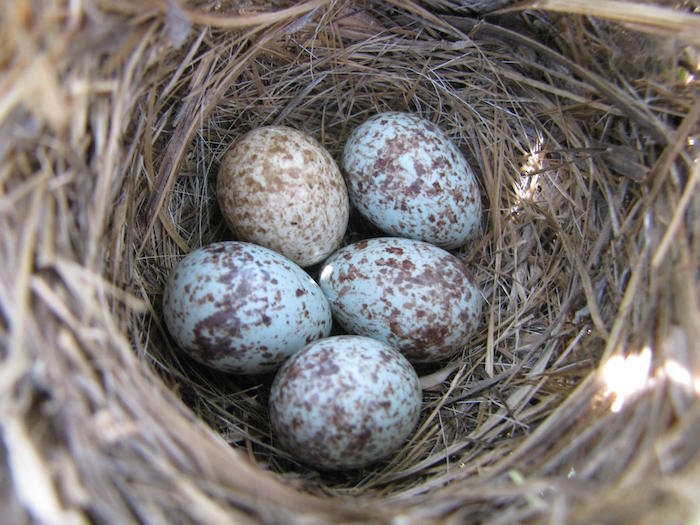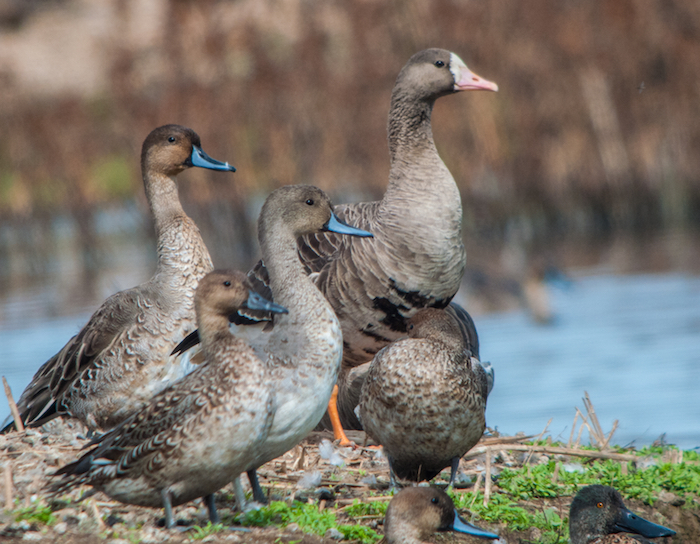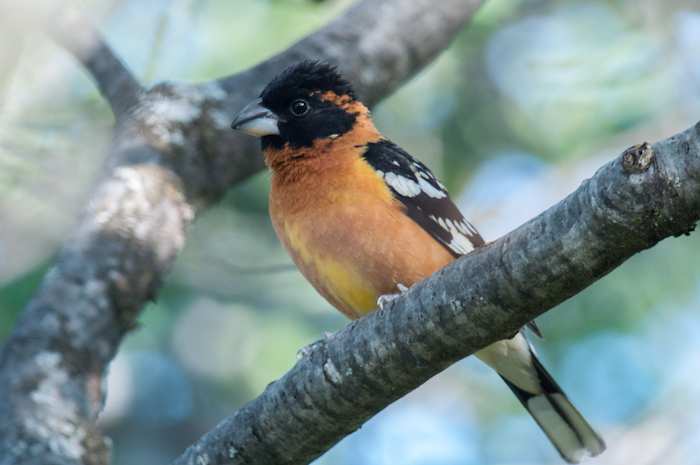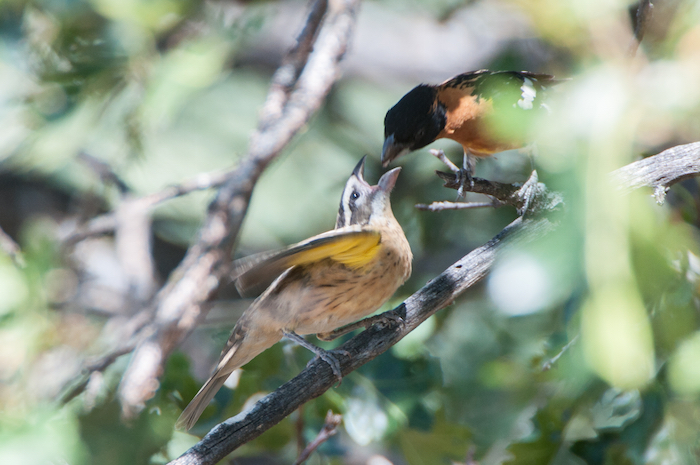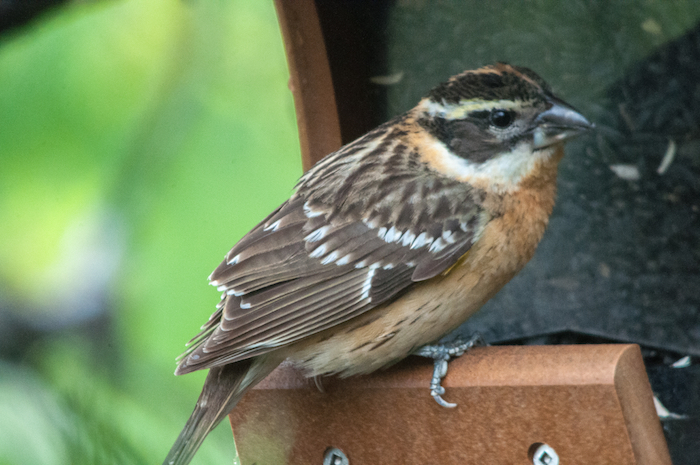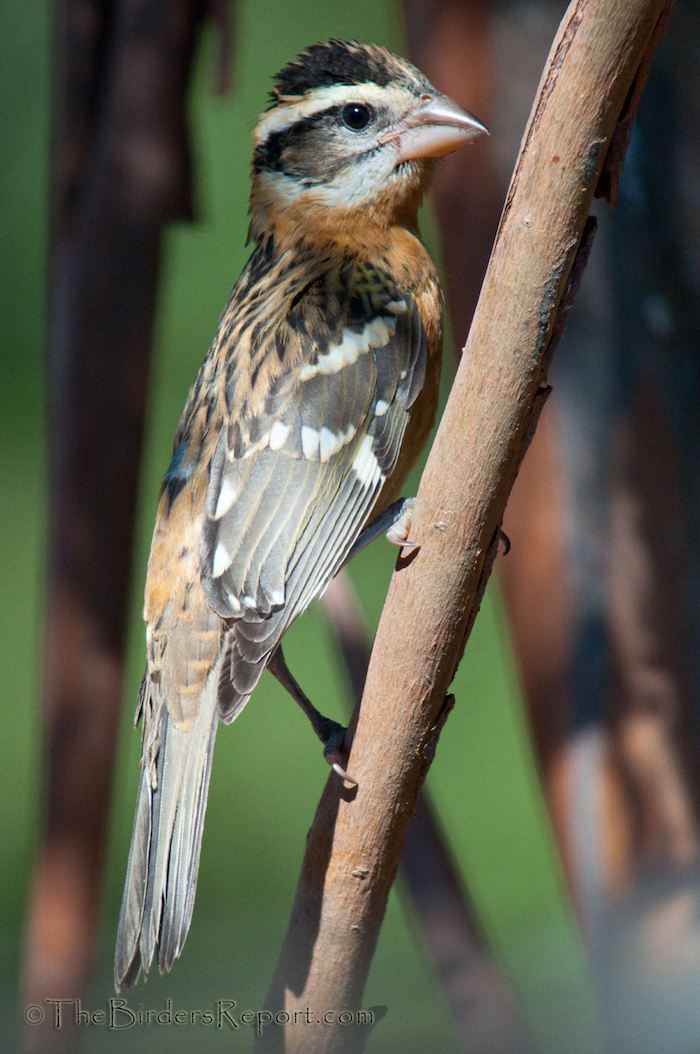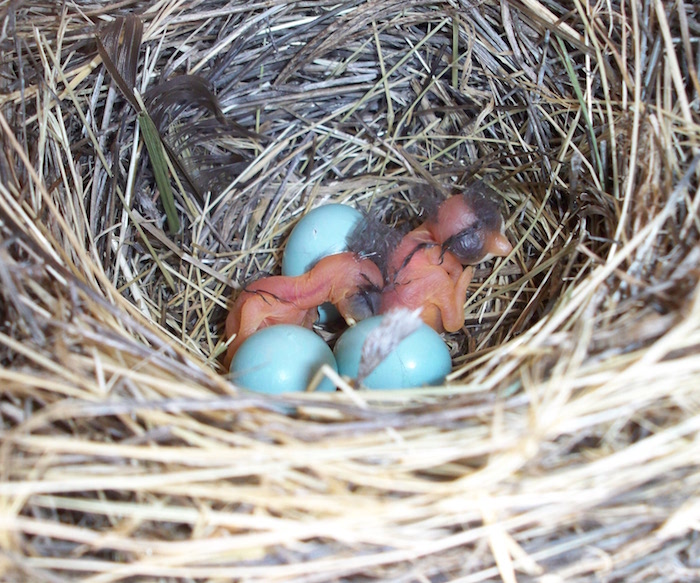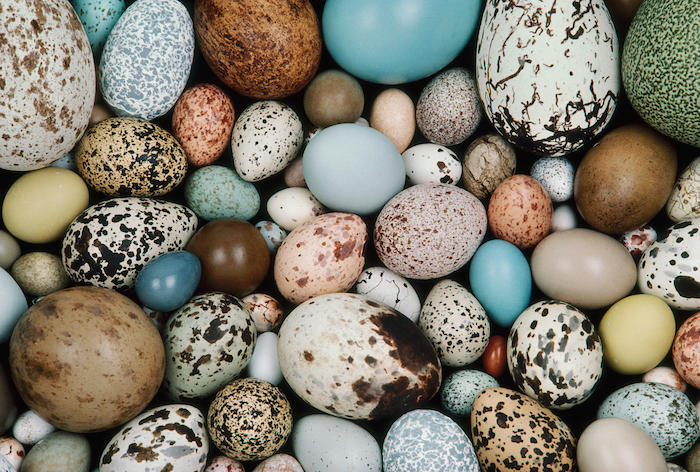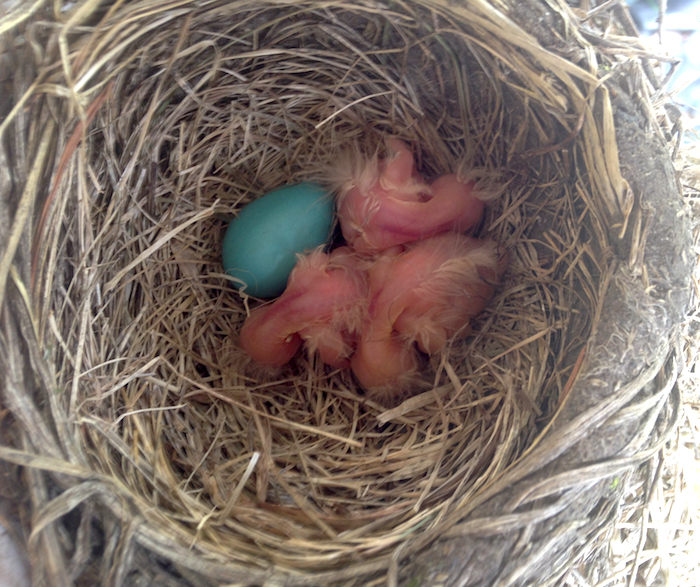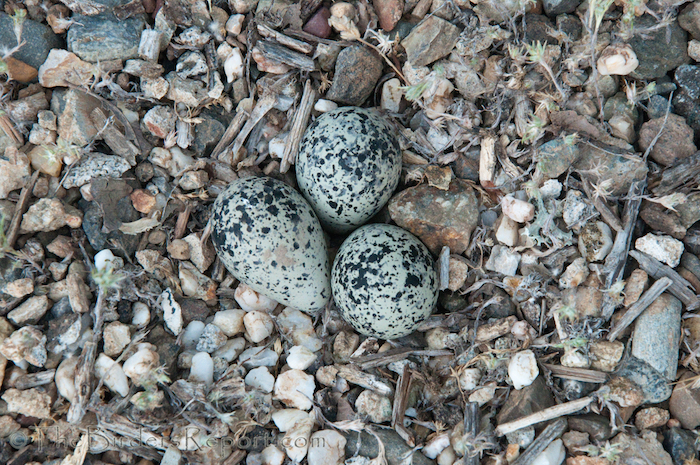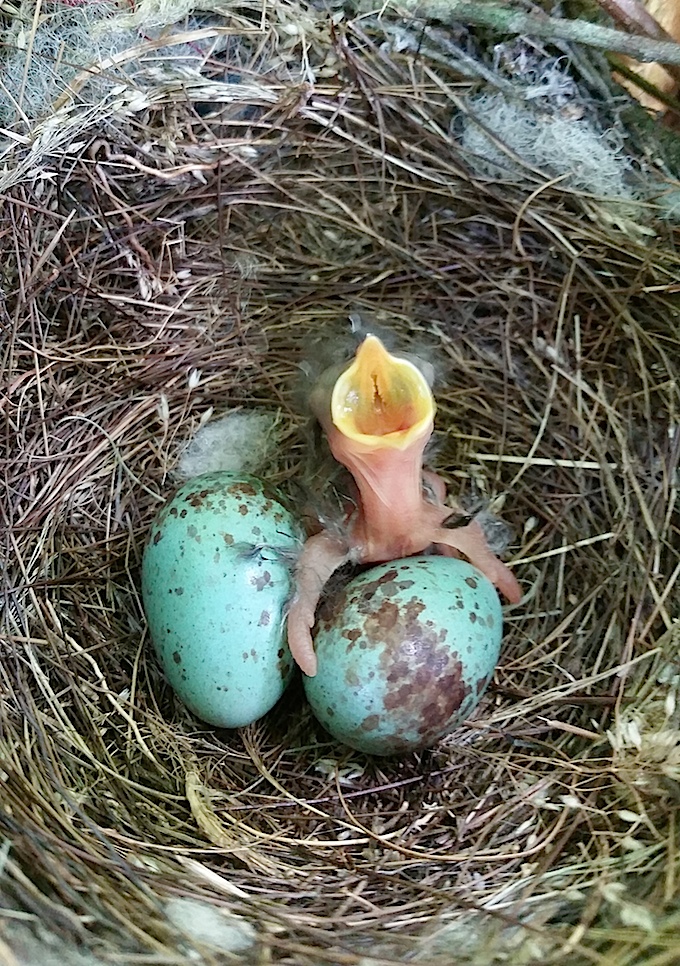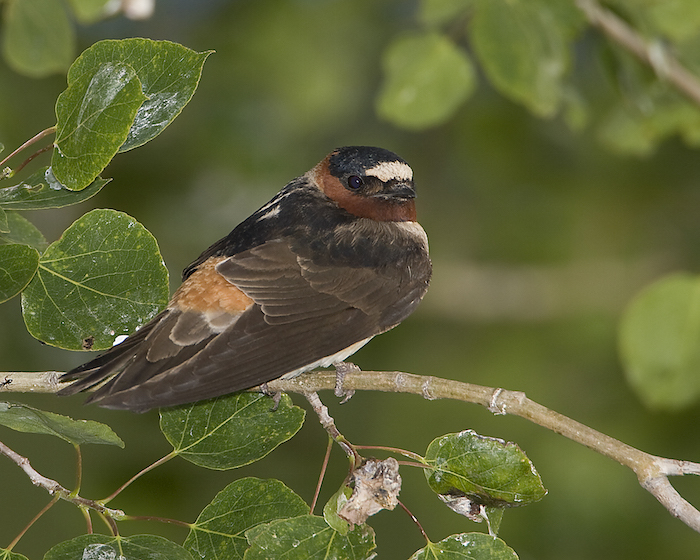
Cliff Swallow photo courtesy David Bogener
Late July, and you may see no more of Cliff Swallows than their orange rumps, heading south.
For a couple of months they have eddied around North State bridges like summer snowflakes. But now nesting is done. Roomfuls of flying insects have been caught and turned into feathers and warm heartbeats. Winter remains distant, so young birds and vagrant souls may roam with no sense of urgency.
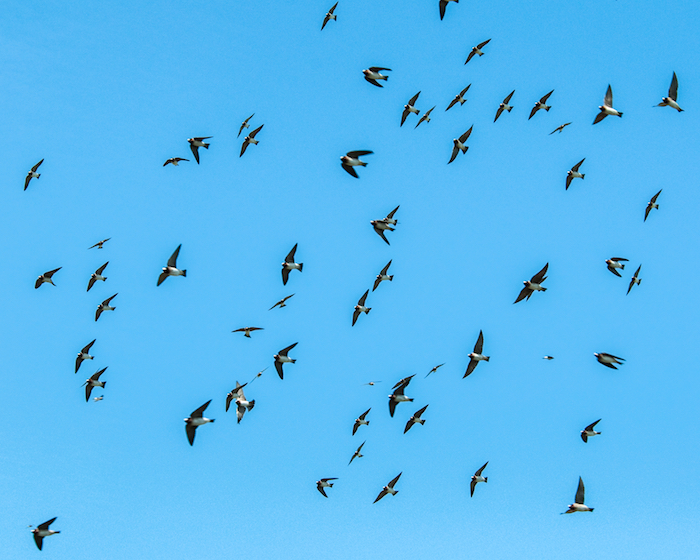
But the flocks will tend south, to the clime that history tells them is home. For cliff swallows this is deep into South America, a 6000 mile flight to where they may be seen hawking insects over Argentinian grasslands.
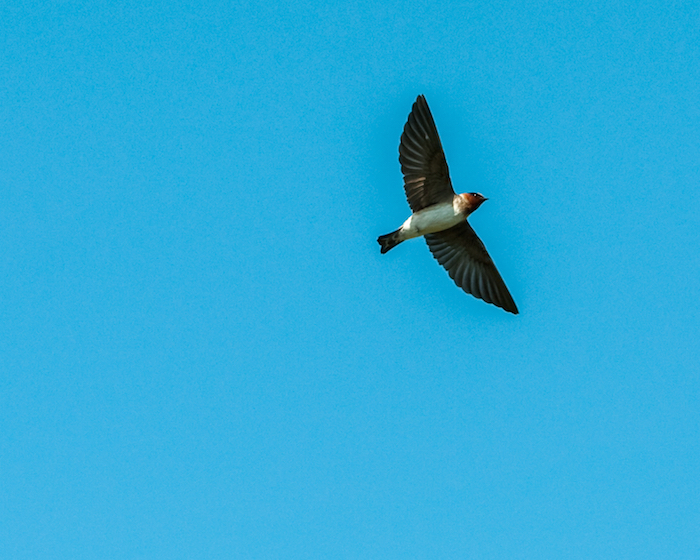
Throughout most of North America, these are the swallows that build their gourd-shaped nests of mud, cemented under eaves, sills, and bridges. In Redding, they have long colonized the old Monolith at Turtle Bay. With recent developments, house sparrows have taken over those nests, and the swallows have moved to both the Sundial and Highway 44 bridges.
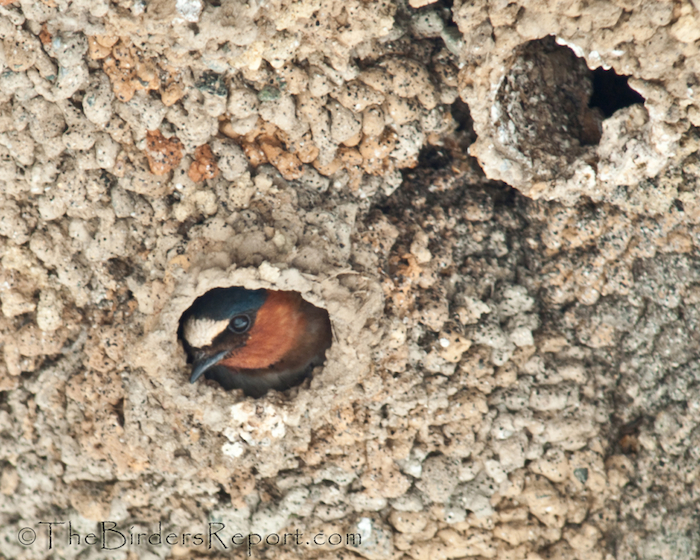
Architecture like the Sundial Bridge is a boon to cliff swallows. The bridge provides the ceilings and cornices where the birds can construct their nests beyond reach of terrestrial predators. The shoreline provides mud that the swallows can carry, one beakload at a time, to form their crèches. The river also hosts its salmon-fest of insects, which the swirling clouds of swallows catch in flight to feed their young.
Similar conditions made them and the Mission of San Juan Capistrano famous a century ago through the legend created by Fr. O’Sullivan, and recorded in his book Capistrano Nights:
One day, while walking through town, Father O’Sullivan saw a shopkeeper, broomstick in hand, knocking down the conically shaped mud swallow nests that were under the eaves of his shop. The birds were darting back and forth through the air squealing over the destruction of their homes.
“What in the world are you doing?” O’Sullivan asked.
“Why, these dirty birds are a nuisance and I am getting rid of them!” the shopkeeper responded.
“But where can they go?”
“I don’t know and I don’t care,” he replied, slashing away with his pole. “But they’ve no business here, destroying my property.”
Father O’Sullivan then said, “Come on swallows, I’ll give you shelter. Come to the Mission. There’s room enough there for all.”
The very next morning, Father O’Sullivan discovered the swallows busy building their nests outside Father Junípero Serra’s Church.
Since then, generations of tourists have marveled at the annual “Miracle of the Swallows.” Indeed, when 1990’s renovation cleaned out the nests and chased the swallows off, Capistrano undertook substantial efforts to coax the birds back.
Here in the North State our development has created our own “Miracle of the Swallows.” Their nesting success allows the hope that we will see them swirling here again each spring!

